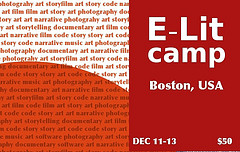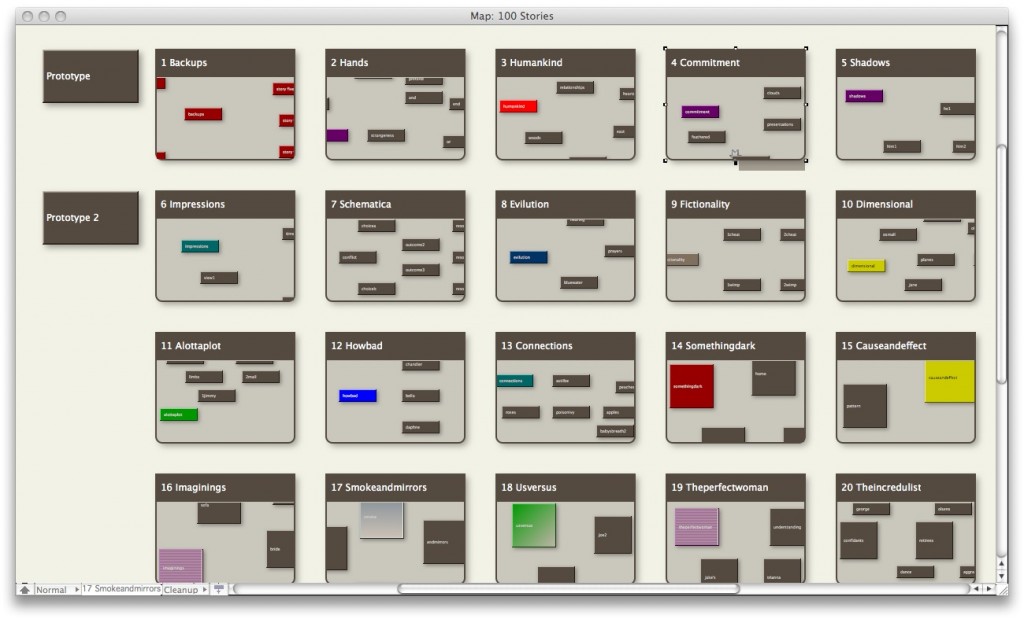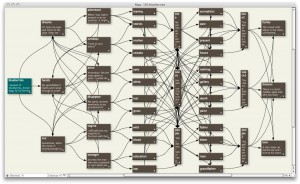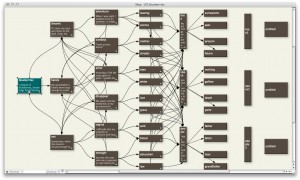TALKING HYPERTEXT: A New Direction?
Stacey Mason at Eastgate (Tinderbox and Storyspace) has an interesting concept up over at HLit: what about reading hypertext aloud.
Inspired perhaps by Finnegan Flawnt’s extraordinary reading voice rather than my own little ditty he’s reading, she weighs the possibilities and decides “The thought of a work and a user interacting back and forth through sound to create a narrative is worth exploring.”
I like her inquisitive nature and the willingness to project ideas way beyond their intent. And, this is a damn good idea too. What came instantly to my mind is the robot helpers you get on the phone that can understand your responses to direct you step by step to a resolution (or a real person who can intercept and help). I could well envision a voice-activated reading of a hypertext, whether the reader says a linking word aloud and thus moves the narrative forward, or how’s this, totally phone conversationally driven where an obvious link (perhaps obvious by tone or inflection) is offered to the listener who then repeats a word or phrase to direct the story to their own choice.
This sounds like an interesting project, audio controlled hypertext. I’m sure touch-text is already in the making with the touch-screens, and visual images will play a big part in that endeavor. But Stacey’s come up with a pattern of thought here that I hope she pursues.





 The Lost Children: A Charity Anthology
The Lost Children: A Charity Anthology